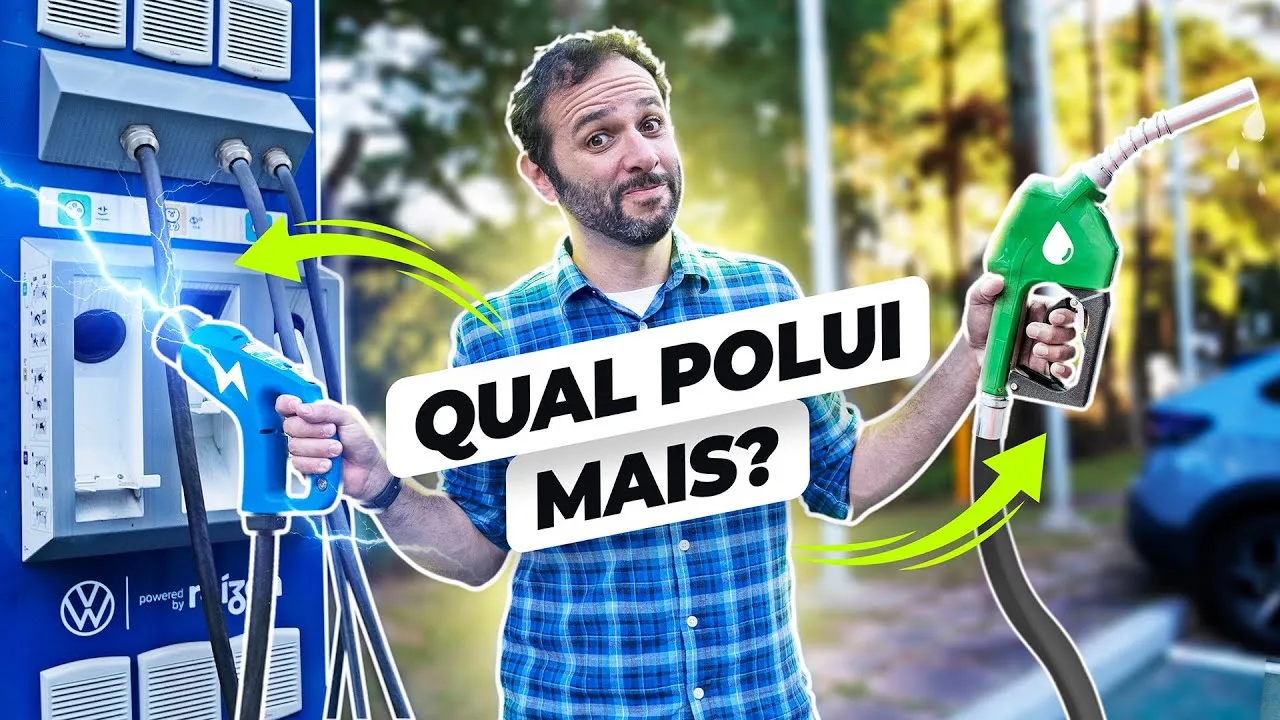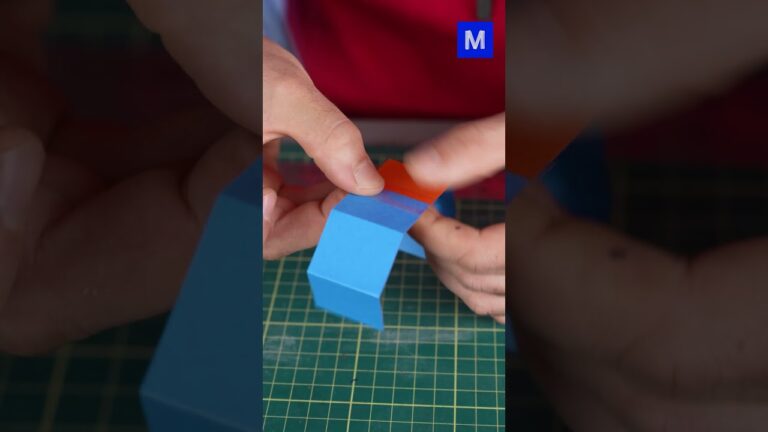Como o CARRO ELÉTRICO POLUI? Entenda a poluição invisível
Electric cars pollute much less than cars that use fuel, right? Not always. This comparison depends on several factors. In some countries, an electric car can emit more carbon dioxide than a car running on ethanol here in Brazil. That's why, today, we're going to unravel some myths about these ultra-modern cars And discover the importance of understanding very well where the energy we consume comes from. For that, we came to Volkswagen, at the Anchieta factory, to show the initiatives They have to accelerate the change to more responsible energy consumption and to Reduce carbon dioxide emissions, the so-called decarbonization. But first of all, how is it possible for an electric car to emit more carbon dioxide Than a combustion car when it doesn't burn anything, it doesn't even have an exhaust system? That's a good question. Here we are not only considering the carbon dioxide emitted during the use of the Car, but all carbon dioxide emitted from the production of fuel or energy, distribution, disposal, everything. This is the so-called well-to-wheel emission and, in the case of electric vehicles, Even if they do not emit anything while running, how the energy that charges the Batteries is produced definately generates some type of emission. And that's where the difference comes in from where you are in the world, because In each place there are different ways of producing electricity that reaches our socket. It is called the energy matrix. Here on the channel, you've already seen us show Various types of power plants. Hydroelectric in Itaipu, nuclear in Angra, solar, Wind… but you've never seen us show a coal-fired thermoelectric plant, for example. This is because the electricity generated here in Brazil is already very clean. Most are based on renewable sources like the ones I mentioned, except for nuclear Which is not renewable, but is still considered low carbon. But this is not reality everywhere, in several countries energy is still produced From non-renewable and highly polluting resources, such as mineral coal, diesel oil and natural gas, for example. Perhaps you have already heard about the problem of coal pollution in China or India, Who are very dependent on this source of energy. But even the United States is also heavily dependent on fossil fuels, mainly coal And natural gas, including for electricity generation. This is the main focus in terms of electric cars because, in fact, when an electric Car runs, it is not completely eliminating its emissions. It's just transferring it to the plant where the electricity was generated.
I'm going to explain it clearly, I'm going to start with the gasoline car. Gasoline comes from oil and oil exploration emits carbon dioxide into the atmosphere. There's a ship sailing there and everything, but to turn into gasoline, the oil Passes through a refinery that also emits a little carbon dioxide. The fuel has To be transported, probably in a diesel truck that emits carbon dioxide. This fuel goes to a gas station where a lot of people work, it uses energy and this also emits carbon dioxide. And finally, a car is going to burn that fuel, and I don't even need to tell you that Burning that fuel emits a lot of carbon dioxide. So, when we are going to calculate how much carbon dioxide a vehicle emits per kilometer Driven, we have to consider all of this here, all of these processes until the car is driving. That's why we call it emission from well to wheel, from the moment the fuel was taken From nature until the moment the car is being driving. It would be possible to make A more precise calculation considering also the manufacture and disposal of the car, Which we call cradle-to-grave, but in this case we are only considering fuel. And If it were an ethanol car, would it make any difference? I would start here with the oil station which, in its place, would be a sugarcane plantation. Instead of the refinery, we would have a plant, you know, to transform sugarcane juice Into ethanol and then the cycle is the same. To plant sugarcane, we need several machines, trucks, everything else and that emits carbon dioxide. But sugarcane, when it grows, absorbs carbon dioxide from the atmosphere. So we have A little arrow here, in reverse, where we are taking carbon dioxide out of the atmosphere. So, now if we look at the cycle… So, now, looking at the ethanol cycle, we see that there is a big difference because There is an absorption of carbon dioxide here that greatly reduces total emissions In the end. And the electric car, huh? I'm going to do this cycle the other way Around, okay? So, the electric car to run does not emit absolutely nothing, nor Does it have exhaust system. Where is this energy coming from? It came from a charging Station which, in order to function, emits a little carbon dioxide. Before that, The energy went through an entire distribution system with stations, people doing Maintenance and everything else, and that emits a little bit of carbon dioxide. So far, this electric car process has been great, right? The car doesn't emit anything, the intermediary processes, there's no truck, there's Very little moving, there's no industry in between, the question is what are we going to put here? Where is this electrical energy coming from? In Brazil, most of the energy comes from hydroelectric plants that use the power of
Water from rivers and this generates very little carbon dioxide. Look, if it was always like this, we would have very good well-to-wheel emissions, With very little carbon dioxide being emitted into the atmosphere. The problem is that it's not always like that. If we replace the hydroelectric plant with a coal-fired thermoelectric plant, it literally works by burning carbon. So, this little arrow of the emission here, I could draw it much bigger. Because of all of his, the emissions of this type of car are very difficult to estimate Because it depends on how the electrical energy you are using to charge the battery was generated. It's not only countries that are worrying about where the energy you are using comes from. Many large companies, such as Volkswagen, have already taken several actions to make The energy matrix of factories cleaner and more sustainable, regardless of the country's energy matrix. Here at the Anchieta factory, they use part of the energy coming from a small hydroelectric Plant, or PCH, it's the same as the hydroelectric plant that we've already shown Here in the channel, but much smaller and that helps to reduce the environmental impacts of this type of energy. The interesting thing is that the plant doesn't need to be right next door and it's not connected directly to the factory. There is a compensation scheme, they control the energy consumed very well and hire The PCH to inject an amount equivalent to part of that energy into the network. And in this way, the company obtains international renewable energy certificates, I-RECS, which are a kind of green seal received by companies that prove the use of renewable energy in their processes. But the concern is not limited to the factory processes, here they have an emission's Laboratory to ensure that the vehicles also comply with the standards for the emission of polluting gases. Here, the cars are connected on top of a dynamometer and a simulation of the car driving In the city and also on the road is done. A driver has to follow a script on the Screen as if it were a video game, accelerate, stop, change gears… You just can't Put your hand on the steering wheel. At the front of the car there is a huge fan That simulates the wind and cools the engine. Behind, the wheels are locked so the car doesn't move. What comes out of the exhaust is stored in bags and then analyzed to measure not only The amount of carbon dioxide, but several other pollutants. Afterwards, a test is also carried out on the street with a car carrying various measuring equipment. Thus, they know if what was seen in the laboratory corresponds to real life. All this already helps a lot to reduce the direct and indirect emissions of carbon Dioxide by the factory, but Volkswagen wants to go further. The commitment is to neutralise emissions of this gas by 2050.
This does not mean that the factory will no longer emit any more carbon dioxide, but That it will take care to make its energy matrix as clean as possible and will develop Actions to offset the emissions that need to exist until reaching neutral emissions, That is, emit at most the amount of carbon dioxide that is captured in some other way. I think you can see how difficult it is to reduce carbon emissions, the so-called decarbonization. Here in Brazil, we already have a huge advantage due to the great use of biofuels, But with the arrival of vehicle electrification it is always good to remember the Importance of having a clean energy matrix to get the most out of these emission reduction efforts. After all, if we have such a great energy matrix, Brazil has the potential to become As pioneering in electrification as it is today in the world of biofuels. That's why we're here at Volkswagen. To show you how they are using the most modern sustainability concepts to decarbonize The products they offer, from manufacturing, through use to disposal.







